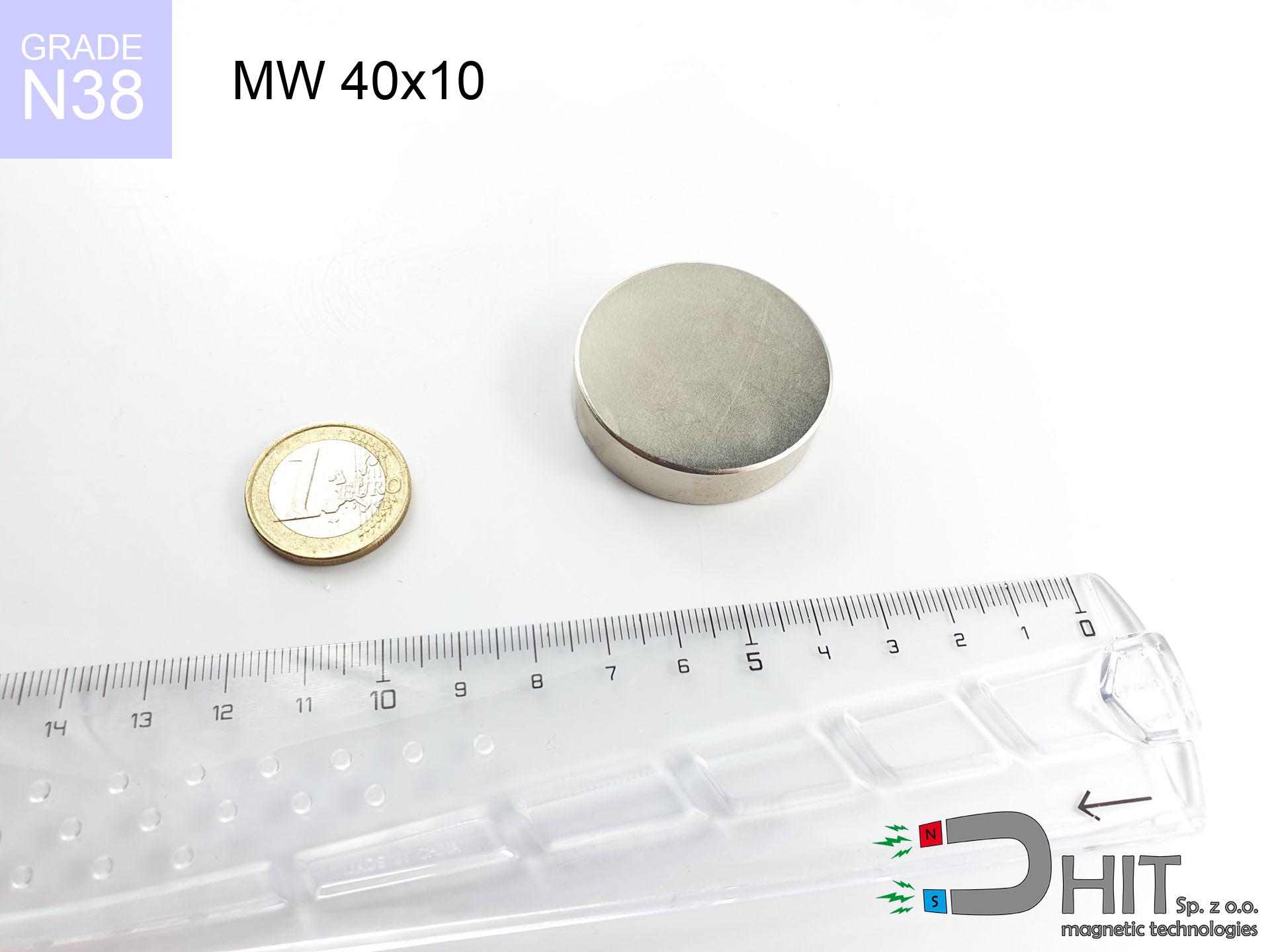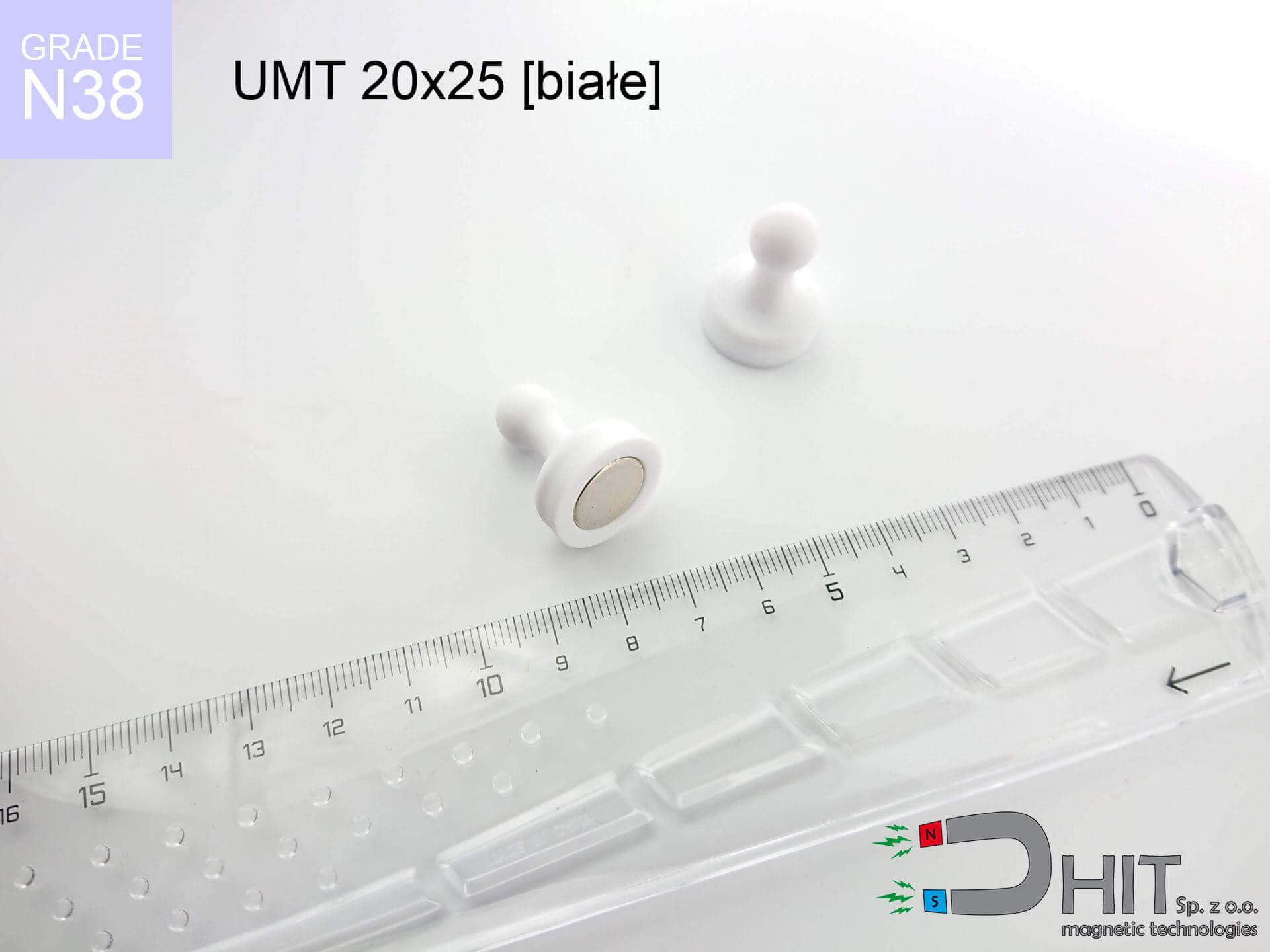MP 20x5x5 / N38 - ring magnet
ring magnet
Catalog no 030186
GTIN: 5906301812036
Diameter
20 mm [±0,1 mm]
internal diameter Ø
5 mm [±0,1 mm]
Height
5 mm [±0,1 mm]
Weight
17.67 g
Magnetization Direction
↑ axial
Load capacity
1.43 kg / 14.02 N
Magnetic Induction
275.98 mT
Coating
[NiCuNi] nickel
2.76 ZŁ with VAT / pcs + price for transport
2.24 ZŁ net + 23% VAT / pcs
bulk discounts:
Need more?Want to talk magnets?
Call us
+48 888 99 98 98
or send us a note through
request form
the contact section.
Parameters along with form of a magnet can be analyzed with our
force calculator.
Orders placed before 14:00 will be shipped the same business day.
Magnetic properties of material N38
Physical properties of sintered neodymium magnets Nd2Fe14B at 20°C
Shopping tips
Pros and cons of rare earth magnets.
In addition to their magnetic capacity, neodymium magnets provide the following advantages:
- They have unchanged lifting capacity, and over more than ten years their attraction force decreases symbolically – ~1% (according to theory),
- They do not lose their magnetic properties even under strong external field,
- In other words, due to the shiny surface of nickel, the element is aesthetically pleasing,
- Magnetic induction on the surface of the magnet is extremely intense,
- Neodymium magnets are characterized by extremely high magnetic induction on the magnet surface and are able to act (depending on the form) even at a temperature of 230°C or more...
- Thanks to the possibility of accurate shaping and customization to individualized projects, magnetic components can be produced in a variety of geometric configurations, which amplifies use scope,
- Versatile presence in innovative solutions – they serve a role in mass storage devices, electric drive systems, medical equipment, and modern systems.
- Thanks to efficiency per cm³, small magnets offer high operating force, with minimal size,
Disadvantages of NdFeB magnets:
- They are fragile upon heavy impacts. To avoid cracks, it is worth securing magnets in special housings. Such protection not only protects the magnet but also improves its resistance to damage
- We warn that neodymium magnets can lose their power at high temperatures. To prevent this, we advise our specialized [AH] magnets, which work effectively even at 230°C.
- When exposed to humidity, magnets usually rust. To use them in conditions outside, it is recommended to use protective magnets, such as magnets in rubber or plastics, which prevent oxidation and corrosion.
- Limited possibility of producing nuts in the magnet and complex shapes - recommended is cover - mounting mechanism.
- Health risk resulting from small fragments of magnets can be dangerous, when accidentally swallowed, which becomes key in the aspect of protecting the youngest. It is also worth noting that small elements of these magnets can disrupt the diagnostic process medical after entering the body.
- Due to complex production process, their price is relatively high,
Breakaway strength of the magnet in ideal conditions – what affects it?
The specified lifting capacity concerns the limit force, obtained under ideal test conditions, namely:
- on a plate made of mild steel, effectively closing the magnetic flux
- possessing a massiveness of min. 10 mm to avoid saturation
- with a plane free of scratches
- with total lack of distance (no coatings)
- for force acting at a right angle (pull-off, not shear)
- in neutral thermal conditions
What influences lifting capacity in practice
In practice, the actual holding force depends on a number of factors, presented from crucial:
- Gap (between the magnet and the metal), as even a very small clearance (e.g. 0.5 mm) leads to a decrease in force by up to 50% (this also applies to paint, corrosion or debris).
- Force direction – catalog parameter refers to detachment vertically. When slipping, the magnet holds significantly lower power (typically approx. 20-30% of nominal force).
- Steel thickness – too thin sheet causes magnetic saturation, causing part of the power to be lost to the other side.
- Plate material – low-carbon steel attracts best. Alloy admixtures lower magnetic permeability and holding force.
- Plate texture – ground elements ensure maximum contact, which improves force. Rough surfaces reduce efficiency.
- Temperature – heating the magnet results in weakening of induction. Check the thermal limit for a given model.
* Lifting capacity was measured by applying a steel plate with a smooth surface of optimal thickness (min. 20 mm), under vertically applied force, whereas under parallel forces the lifting capacity is smaller. In addition, even a slight gap {between} the magnet and the plate lowers the load capacity.
Safety rules for work with neodymium magnets
Impact on smartphones
Navigation devices and mobile phones are extremely sensitive to magnetism. Direct contact with a strong magnet can permanently damage the sensors in your phone.
Protective goggles
Watch out for shards. Magnets can explode upon uncontrolled impact, launching shards into the air. Eye protection is mandatory.
Thermal limits
Standard neodymium magnets (N-type) undergo demagnetization when the temperature surpasses 80°C. Damage is permanent.
Hand protection
Large magnets can crush fingers in a fraction of a second. Never place your hand between two strong magnets.
Nickel coating and allergies
A percentage of the population have a hypersensitivity to Ni, which is the common plating for NdFeB magnets. Prolonged contact may cause skin redness. We suggest use safety gloves.
Safe operation
Be careful. Neodymium magnets act from a distance and connect with huge force, often faster than you can react.
Protect data
Do not bring magnets near a wallet, laptop, or screen. The magnetism can permanently damage these devices and wipe information from cards.
Warning for heart patients
Life threat: Neodymium magnets can deactivate pacemakers and defibrillators. Stay away if you have electronic implants.
Choking Hazard
Always keep magnets out of reach of children. Choking hazard is high, and the consequences of magnets clamping inside the body are very dangerous.
Flammability
Fire hazard: Rare earth powder is explosive. Do not process magnets without safety gear as this may cause fire.
Security!
Details about risks in the article: Safety of working with magnets.







![SM 25x350 [2xM8] / N42 - magnetic separator SM 25x350 [2xM8] / N42 - magnetic separator](https://cdn3.dhit.pl/graphics/products/sm-25x350-2xm8-pim.jpg)

